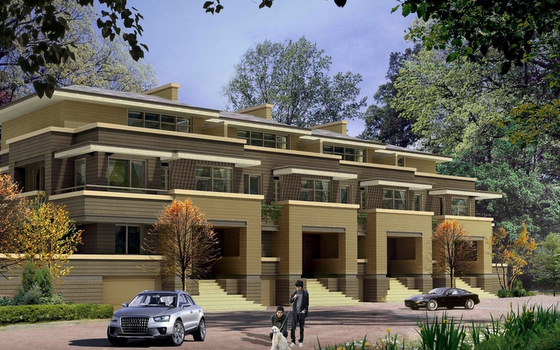MAINBOARD-LISTED construction group and property developer Tiong Seng Holdings has reported a 54.4% year-on-year increase in net profit attributable to shareholders for the six months ended 30 June 2015 (“1H2015”) while revenue dropped 39.4% to S$197.1 million.  Pek Lian Guan, CEO of Tiong Seng Holdings.
Pek Lian Guan, CEO of Tiong Seng Holdings.
NextInsight file photo.Notably, the core construction segment achieved a gross profit margin of 9.5%, up from 5.8% a year ago. Mr Pek Lian Guan (白連源), CEO of Tiong Seng Holdings, explained: “This was due to better project mix as we strive to prospect actively, but selectively, for contracts."
This contributed to a 41.6% decrease in the construction segment's revenue to S$186.2 million.
The decline was also caused by differences in stages of revenue recognition for various contracts. In accordance with the Group’s revenue recognition policy, work done amounting to approximately S$53.5 million from newly commenced projects have yet to be recognized as revenue as at 30 June 2015.
Revenue from the development properties segment soared by 104.7% yoy to S$6.0 million for 1H2015.
The increase was mainly contributed by sales recognition of 14 units (2,719 sqm) of phase II of the Sunny International Project, 7 units (1,334 sqm) of B1 from Equinox Project and 1 unit (141 sqm) from Tiamen Jinwan Project.
As at 30 June 2015, approximately S$110.0 million of gross development value were sold but are yet to be recognized. These projects include: 299 units (29,605 sqm) of Sunny International, 62 units (16,012 sqm) of Equinox, 112 units (12,703 sqm) of Tranquility Residences and 1 unit (59 sqm) of Wenchang Baihui.
Cash and cash equivalents as at 30 June 2015 stood at S$53.3 million. The Group recorded a net cash outflow from operating activities of S$30.2 million for 1H2015 compared to S$9.8 million in the previous 6 months ended 30 June 2014 (“1H2014”).
This was largely due to:
1) Decrease in construction work-inprogress by S$10.9 million, attributed mainly to different stages of revenue recognition for construction projects
2) Increase in development properties by S$35.9 million, attributed mainly to additional property development costs for Tranquility Residences and Equinox projects, partially offset by units sold in Cangzhou Sunny International phases II and Equinox,  Tiong Seng's Equinox project in Tianjin, China is a residential and commercial development.
Tiong Seng's Equinox project in Tianjin, China is a residential and commercial development.
3) Decrease in trade and other receivables by S$10.5 million attributed mainly to a decrease in accrued receivables from on-going projects and retention sum receivables and 4) decrease in trade and other payables by S$19.6 million attributed mainly to a decrease in accrued trade payables.
In 1H2015, the Group registered a net cash outflow from investing activities of S$2.1million, a S$1.4 million decrease as compared to 1H2014. This was due mainly to fall in acquisition of property, plant and equipment from S$7.1 million in 1H2014 to S$4.4 million in 1H2015.
In addition, the Group recorded a net cash inflow from financing activities of S$26.3 million in 1H2015, an increase of S$5.8 million compared to the corresponding period. This was due to a higher reduction in deposits pledged of S$33.2 million cash compared to S$13.7 million in 1H2014 and net funds received from related parties of S$5.0 million in contrast to net funds paid to related parties of S$12.9 million in 1H2014.
The increase in net cash from financing activities was partially offset by net repayment of loans and borrowings of S$6.4 million as compared to net receipt of loans and borrowings of S$20.2 million in 1H2014.
The Group’s net asset value per share was 28.17 Singapore cents as at end-June 2015. This is twice the recent stock price of 14.2 cents.
The Group currently has a robust order book of approximately S$1.6 billion extending to 2020.
|
|






